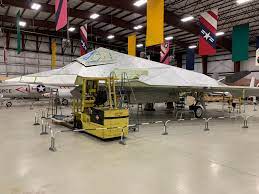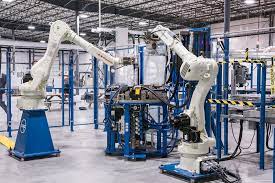Automated manufacturing is the creation of machines and systems that use electronics and computers to produce products at minimum cost, requiring minimal labor intervention, and producing components of high accuracy and desired tolerances repeatedly without causing defects. This guide is all about fixed automation in detail.
What is fixed automation?

In fixed automation manufacturing, also called complex automation, the automated production processes and assembly procedures are programmed to produce a single product. Tools, equipment, and machines allocated to high-production needs determine the sequence of production and operation.
Automated systems that manufacture the same product style are called fixed automation systems. It is very difficult, if not impossible, for a fixed system to change its product styles once it has been in place for a long time.
An integrated and coordinated production system involves many steps and operations to produce a single unit.
A significant portion of the investment for this type of manufacturing automation comes from the design and engineering of the equipment.
Once built, a piece of equipment is relatively inflexible when accommodating any other configuration for another product. Automated production systems are designed specifically for high production rates. The very high demand rates and volumes of the products for which they are designed quickly amortize the high initial costs of fixed automation investments.
Read more:ACB Breaker: Each And Everything You Should Need To Know About ACB Breaker
A high-demand and generic product that does not need to be changed is the best candidate for this type of automation.
This automation continues to be used by Coca-Cola in their factories. Thus, Coca-Cola can produce large quantities of its classic soft drink and meet its high demands.
Benefits of fixed automation
· Increased efficiency and productivity
The robot can work 24 hours a day, seven days a week, and is simply faster than a human operator. As a result of this additional work time, the work cell’s efficiency and throughput will increase.
Moreover, industrial automation enables the work cell to be adjusted as needed. It is often possible to reprogram an automated system offline to optimize or make changes for a new product, often with little to no downtime and minimal operator training.
· Cost reductions
The cost of using robots is lower than that of using human operators. The only costs associated with a robot are its maintenance and energy consumption. Compared with salaries and benefits for operators, the cost savings are significant over time. Furthermore, robots improve quality and optimize processes, reducing waste and providing even more significant cost savings.
· Enhanced safety
In addition to improving operator safety, industrial automation eliminates hazardous chemical handling, heavy lifting, working in crowded conditions, and repetitive motions that can be hazardous. Robots and other automation solutions can perform these tasks more safely for operators.
· Qualitatively improved
Work cells operated by automation are typically less variable and more error-prone than those operated by humans. Industrial automation makes manufacturing processes more consistent and reproducible, resulting in better quality products.
· Enhanced speed to market
As a result of fixed automation, the production line becomes more efficient, reducing lead times and, in some cases, justifying the decision not to outsource production.
Daily life examples of fixed automation
· Manufacturing and packaging
A manufacturing plant’s next task is to package its products once it has finished producing. The packaging of goods will be a hit-or-miss affair without automation. You can see neatly packaged goods with the help of automated machine processes.
A manufacturing and packaging system is an example of an automation system. The production of milk is a simple example. Produced products are mass-produced and packaged using assembly-type production.
· Satellites and scanners
Documents are photographed with scanners and output as digital files or printed on hard copies using printers. Automated processes are examples of this.
The sky and the moon are filled with many types of satellites launched by astronomers. Using computer programs and codes is essential to launching them. Keeping them in orbit or in the sky requires them to go to specific locations.
· Drilling for oil and gas
Industrial automation is extremely useful in the oil and gas industry since offshore stations and remote locations are often involved. Having sensors and other monitoring equipment reduces the number of dangerous and difficult trips technicians have to make.
· Predictions for the weather
In recent years, weather forecasts have become more accurate and have been done for weeks. In the future, they will still be accurate. Have you ever wondered why this is so easy?
That’s great! Computer experts input complicated programs and codes controlled by computer chips and codes in the weather machines. It is one of the most practical examples of automation in the real world. These machines cannot accurately forecast the weather without automation.
· Business automation in manufacturing
Globally, manufacturing plants are automating the tedious work of making big or complicated items with the help of machines. Microchips, for example, are automatically inserted into tight-fitting motherboards in the manufacture of computer motherboards.
· The transport industry
Automated flight controls on commercial planes have long been a part of the airline industry’s industrial automation. Industrial automation will be integrated into self-operating vehicles for commercial and personal use.
· Recruiting and hiring staff
When you post job vacancies on online job boards, finding employees for any opening within your organization can be challenging.
Either way, hundreds of thousands of applicants would apply if the position was internal and needed two or three employees. Sorting through hundreds of curriculum vitae and applications becomes a colossal task.
A candidate tracking system (ATS) will help you separate the wheat from the chaff in this situation. In addition to Jazz, Greenhouse, Oracle Human Capital Management, and Smart Recruiters, there are many others. In this case, computer applications are being used as examples of automation.
Conclusion
Fixed automation, commonly referred to as “hard automation,” describes a computerized manufacturing facility where the machinery setup determines the order of processing processes.





